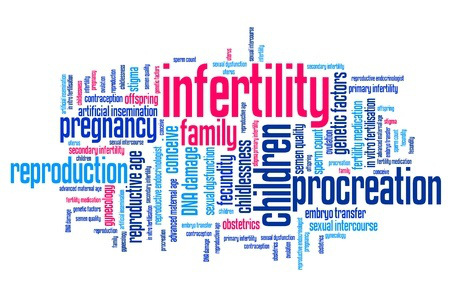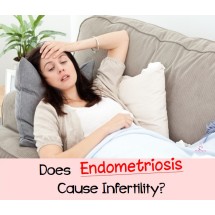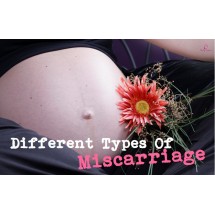I lead a life I have always wanted. I played and studied hard, got good results and landed a great job. I met a loving man who is everything that a girl wants. We got married and lead a comfortable life. We were financially stable, educated and ready for a new addition in our life. But…
Little did we know that having a baby wasn’t something that goes according to plan.. Is this our fate? What’s wrong with us?
Are you actively trying for a baby but there is still no news yet? Find out what are the issues affecting your chances at conceiving a baby. Dr Kelly Loi from Mount Elizabeth Hospital provides more insights into infertility and tips for couples who are trying to conceive.

Fertility problems may arise due to problems in the female or the male reproductive system. Female infertility reasons can broadly be divided into:
1. Ovulation disorders e.g. caused by polycystic ovaries
2. Endometriosis where the lining of the uterus occurs outside its normal position e.g. at the back of the uterus and around the ovaries
3. Tubal disease
Age is also an important contributing factor to infertility.
In women, fertility steadily declines with age. Women are born with a fixed number of eggs. With increasing age, there is a fall in ovarian reserve – i.e. the number of functioning follicles or eggs left in the ovaries. The likelihood of conceiving falls from 20% a month in a woman’s late 20s to 8% in the late 30s. Even the success rate of artificial reproductive treatment is not spared and pregnancy rates fall with increasing age from 40% in women
What are the symptoms?
Infertility is defined as the inability to conceive after 1 year of unprotected sexual intercourse. Ideally, the frequency of intercourse should be 2-3 times a week. Up to 90% of couples should have conceived by the end of the 1st year of trying. At this point, if they still have not conceived, further investigations are warranted. However, older couples, especially where women are over 35, should see a fertility specialist after six months of trying to get pregnant. In view of the impact of age, early diagnosis and treatment are crucial to the successful management of infertility.
Couples should also seek advice earlier if there is a high likelihood of a gynaecological disorder. In a woman with a normal menstrual cycle, a period should occur once every 28 to 35 days. If she has a history of irregular periods, this could indicate an ovulation problem where the egg is not released from the ovary regularly every month and will reduce her chances of conception. If she has painful periods, this may indicate the presence of endometriosis, ovarian cysts or fibroids which may prevent the implantation of a healthy embryo in the uterus. A past history of infection resulting in pelvic inflammatory disease (PID), or previous surgery, may cause tubal disease which would prevent the egg and the sperm from meeting.

What advice should be given to couples trying to conceive?
For couples:
• Try to start planning for a family as early as possible
• Maintain a normal weight, exercise and eat a diet rich in fruits, vegetables and antioxidants
• Stop smoking – smoking impairs sperm quality and female smokers are 1.6 times more likely to be infertile
• Limit alcohol intake to two drinks per day
For women:
• Limit coffee intake to one cup a day; high levels of caffeine are associated with decreased fertility and an increased risk of miscarriage
• Take folic acid to prevent certain birth defects
For men:
• Wear loose-fitting undergarments
• Avoid extremely hot temperatures, such as hot tubs or saunas
• Use lubricants which are suitable for conceiving
How can infertility be treated?
Infertility can be treated depending on the cause, such as:
• For problems related to abnormal ovulation: fertility drugs or injections may help to enable ovulation to occur in a more predictable manner.
• In the case of cysts, fibroids and blocked fallopian tubes: laparoscopic or key-hole surgery may help to improve chances.
• For poor sperm count and quality: intra- uterine insemination or assisted reproductive techniques (ART) may be needed.
ART refers to the use of laboratory techniques to bring the egg and sperm together outside of the woman’s body. ART may also be referred to as In-Vitro Fertilisation (IVF). This generally involves several treatment stages. Firstly, in order to increase the number of eggs produced by her ovaries, the woman has to undergo hormonal injections. Secondly, ultrasound scans and blood tests are needed to assess the growth and maturity of the eggs. Once the eggs are ready, they are retrieved with the help of a vaginal ultrasound while the woman is under anaesthesia. The eggs are then fertilized with the sperm in the laboratory to form embryos before they are transferred back into the woman’s womb several days later.
Complications of Fertility Treatment
Complications are uncommon but there may be side effects with the use of various hormone treatments. With fertility drugs, some side effects include abdominal bloating and rarely, blurred vision. There is also a risk of multiple pregnancy including twins.
With IVF treatment involving fertility hormone injections, problems include psychological stress and physical discomfort. Egg retrieval which is performed under anaesthesia entails some small risks of anaesthesia, bleeding and infection. With the rise in hormone levels in the body, there may be a risk of ‘ovarian hyperstimulation syndrome’ or OHSS. This condition can result in nausea, vomiting and dehydration, and may require hospitalization. Hence, close monitoring, care and medical attention are important.
 By Dr Kelly Loi
By Dr Kelly Loi
Obstetrician & Gynaecologist (Fertility & IVF Specialist)
Practice Address:
Mount Elizabeth Hospital
Address: 3 Mount Elizabeth,
Singapore 228510
Tel: 6737 2666






